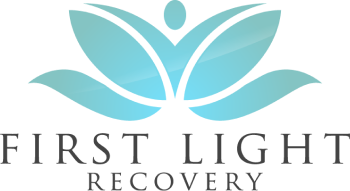Understanding Suicide Background as a Leading Cause of Death
The word suicide comes from the Latin suicidium, meaning “to kill oneself.” It is defined as a person intentionally harming themselves to end their own life. A suicide attempt is defined as a person intentionally harming themselves to end their own life; however, they don’t die. Culturally, suicide can carry different meanings; in some religious settings, it is taboo. In other areas of the world, it is an act of honor, then in some areas, it is a criminal offense.
In U.S. culture, suicide is a mental health and public health crisis. Suicide rates increased from the years 2000-2018 by 30%. The decline began in 2019 and 2020. Though in 2020, 45,979 deaths were due to suicide. This meant that every 11 minutes, one suicide death occurred. Also, in 2020 12.2 million Americans seriously thought about suicide and 3.2 million planned an attempt, and 1.2 million attempted suicides. For individuals ages 10 to 64, it was the ninth leading cause of death and the second leading cause for ages 10-14 and 25-34. It was found that 79% of suicides were male. Non-fatal were four times more likely in women.
What is Passive Suicide Ideation? Passive Vs. Active
Having suicide ideation is having serious thoughts about taking your own life. Passive suicide ideation is wishing you were dead or could die but not having any plans to harm yourself or attempt suicide. Active suicide ideation is having thoughts of wanting to die, with plans, to do so, and intent to carry it out.
Individuals with passive suicide ideation still engage in risky behavior, though perceived as less risky than active. Passive thoughts are still dangerous and are known to shift into active ideation quickly. Passive suicide ideation can be triggered by an unpredictable event, a physical or medical illness or injury, and declining mental health, such as depression.
Measuring Suicide
Suicide risk can be assessed through various scales and measures by professionals. The Columbia Suicide Severity-Rating Scale (CSSRS) is the most used in treatment settings. Factors for suicide risk are:
- Protective Factors – This includes motivators to stay staff such as family and friend support, a stable living environment, hobbies, achievements, and fulfilling employment.
- Risk Factors – These factors create barriers or challenges to the person’s safety. This could include an illness, trauma, substance abuse, a history of mental health issues, and a family history of mental health issues.
- Warning Signs – These are indicators such as hopelessness, helplessness, low self-esteem, preoccupation with death or that they are better off dead, overall decline in mental wellness, presenting with frequent emotional distress, and ensuring they have little responsibility.
- Suicidal thoughts and Planning – This includes past and current thoughts, plans, means, and/or intent.
Suicide Prevention
Due to the potential fluctuation of passive suicide ideation becoming active, mental health treatment is indicated. Individuals with passive suicide ideation benefit greatly from the treatment options of individual and group therapies and psychotropic medications. In more severe instances, psychiatric hospitalization is needed and can help. Look at the warning signs and follow up with supportive resources:
- Verbalizing a desire to die
- Looking at ways to follow through with it
- Sharing feelings of hopelessness and a sense of no purpose and that they are a burden to others
- Substance abuse behavior
- Increased risky and impulsive behavior
- Agitation
- Too little or too much sleep or eating
- Isolation and withdraw
- Increased anger and mood swings
- Great guilt or shame
Coping With Passive Suicidal Thoughts
Even though coping is difficult, there are ways to cope and ask for help. Taking that first step can be the hardest, but once you identify your suicide safety and support system, you don’t have to go it alone.
- Engage with your support system
- Look at any underlying issues that may trigger the thoughts and come up with a safety plan
- Engage your daily living self-care such as sleep and personal hygiene, well-rounded meals, exercise, and relaxing meditation
- Engage and explore hobbies that could bring joy and lower anxiety. Think about hobbies that could build your self-esteem and achievements.
- Reality check by challenging any negative thoughts that come in
Do Passive Thoughts Get Better?
The quick answer is yes! They can get better when active participation in brief and ongoing therapies is active. If quick and brief intervention is needed, engage in safety planning with a professional or trusted support system to help with accountability and engage in follow-up calls to continue the support. On-going therapies, including psychotherapies/talk therapy, psychotropic medications, and collaborative care with a treatment team, has shown to reduce thoughts and treat depression or other related mental health diagnoses.
If You Need Help
- Text 988 Suicide and Crisis Lifeline
- Call the National Suicide Prevention Lifeline at 1-800-273-TALK (8255
If you or someone you know is experiencing suicidal ideation, get immediate help from a medical provider or hospital or call 911. If you are with a person who is suicidal, do not leave them alone, and remove any items that could be dangerous such as firearms or medications.
Resources
- National Institute of Mental Health https://www.nimh.nih.gov/health/topics/suicide-prevention
- Center for Disease Control and Prevention https://www.cdc.gov/suicide/facts/index.html?CDC_AA_refVal=https%3A%2F%2Fwww.cdc.gov%2Fviolenceprevention%2Fsuicide%2Ffastfact.html
- Psycom – “Suicide and Suicide Prevention”
- choosingtherapy.com




